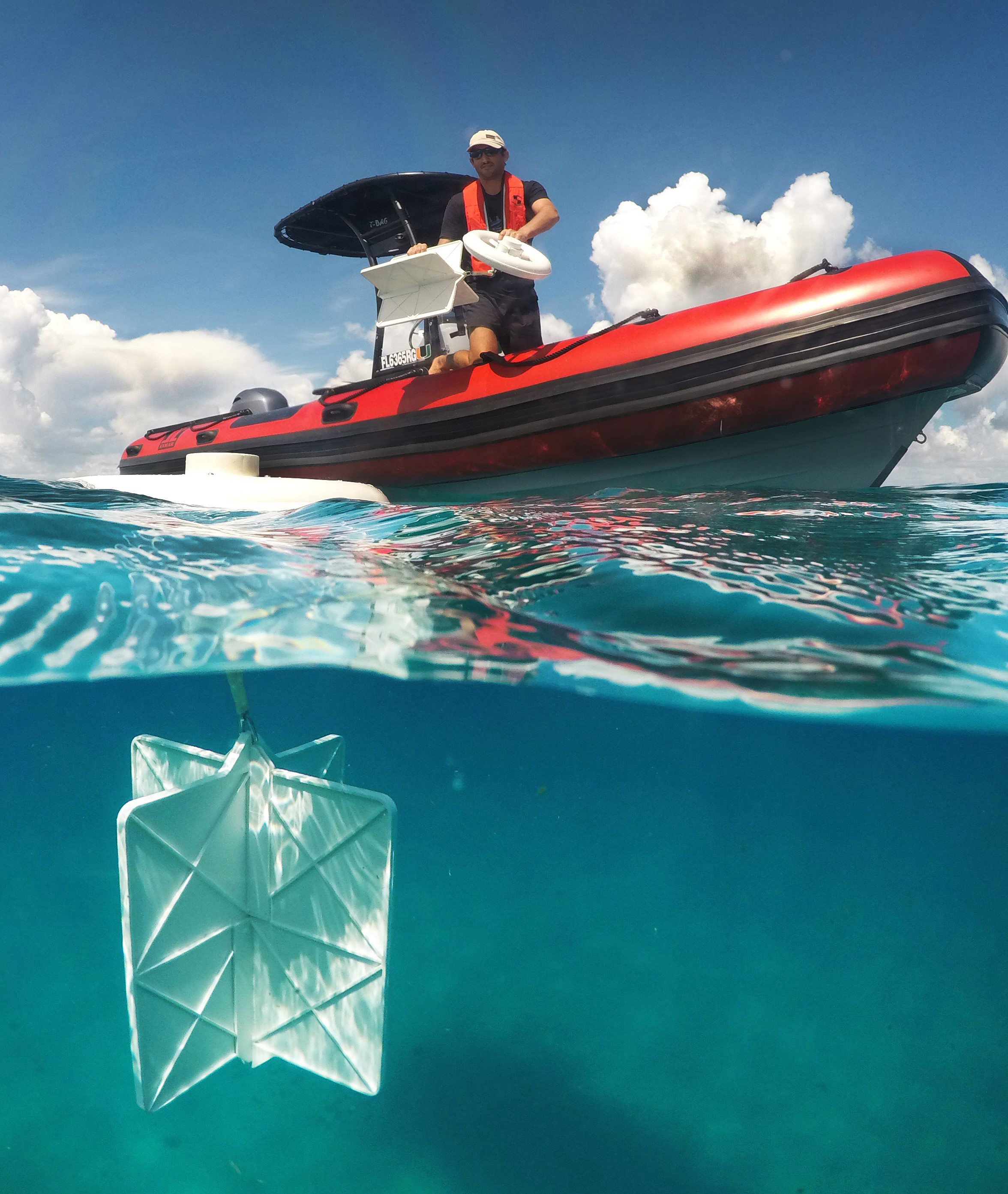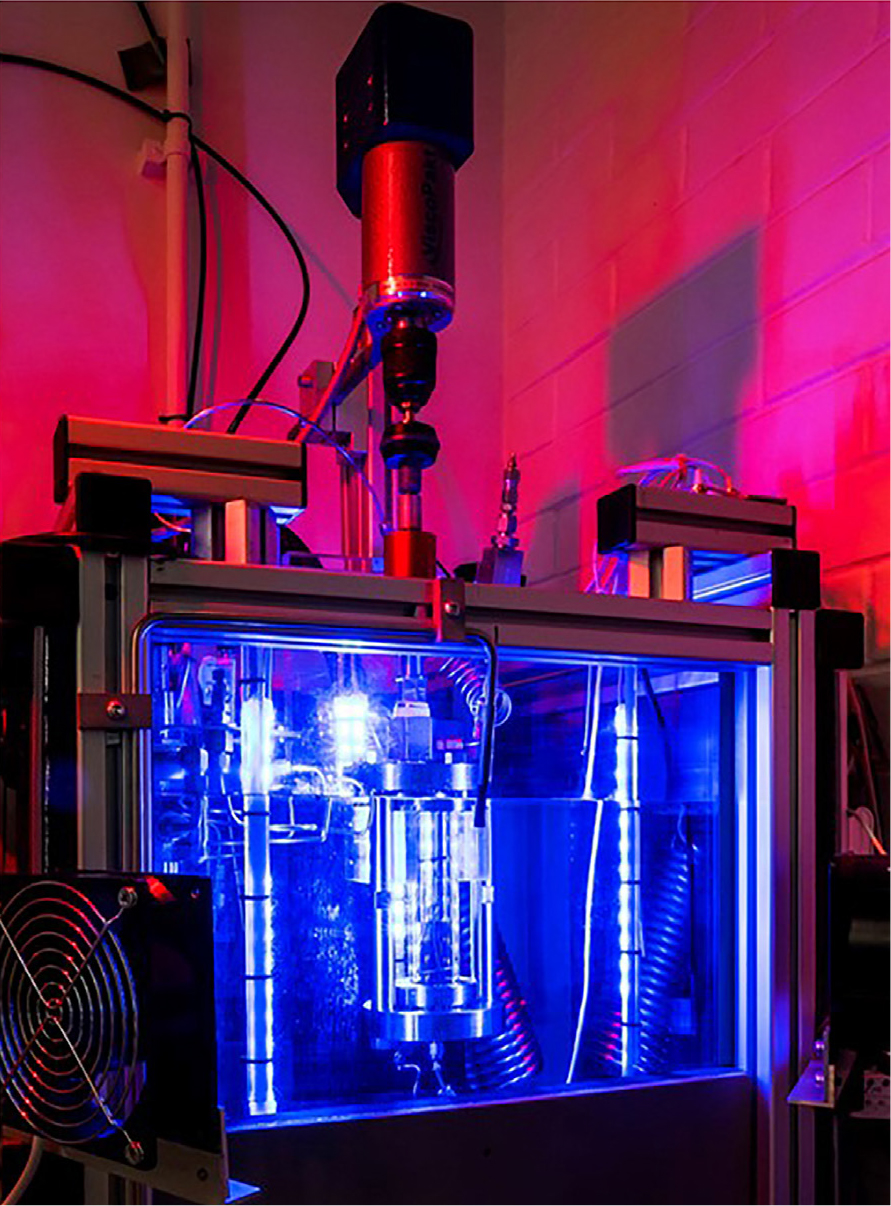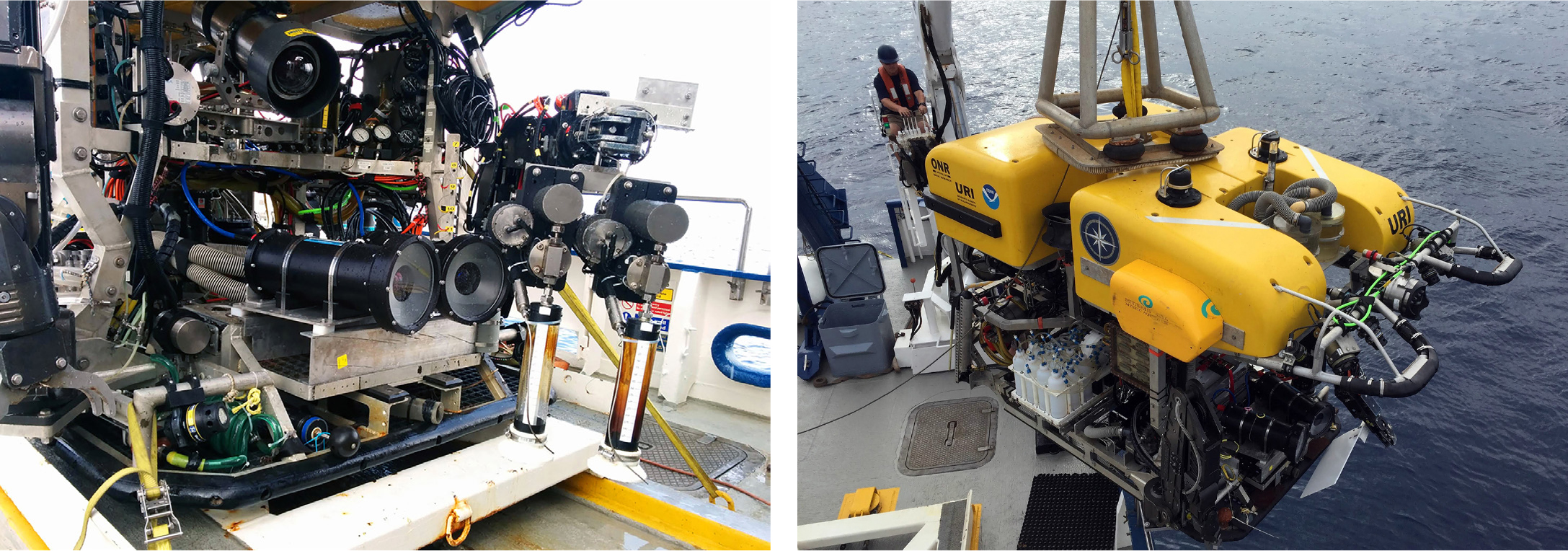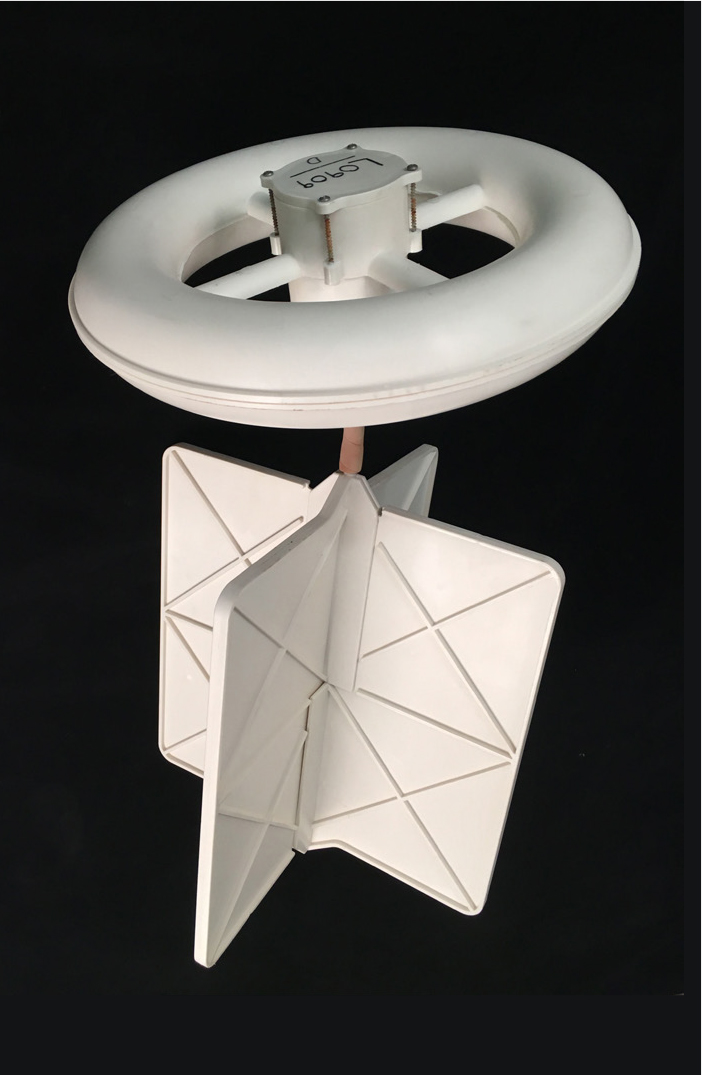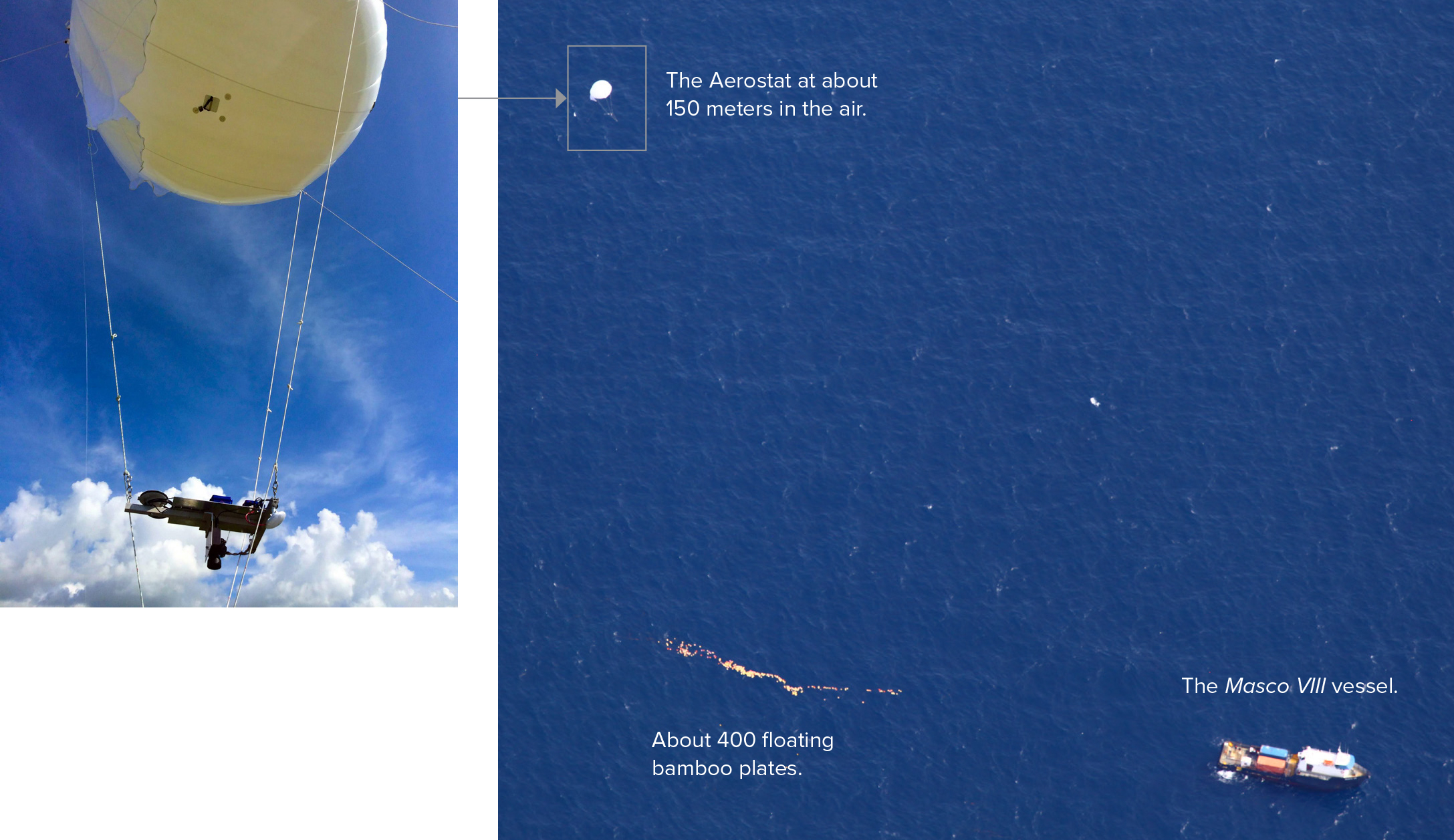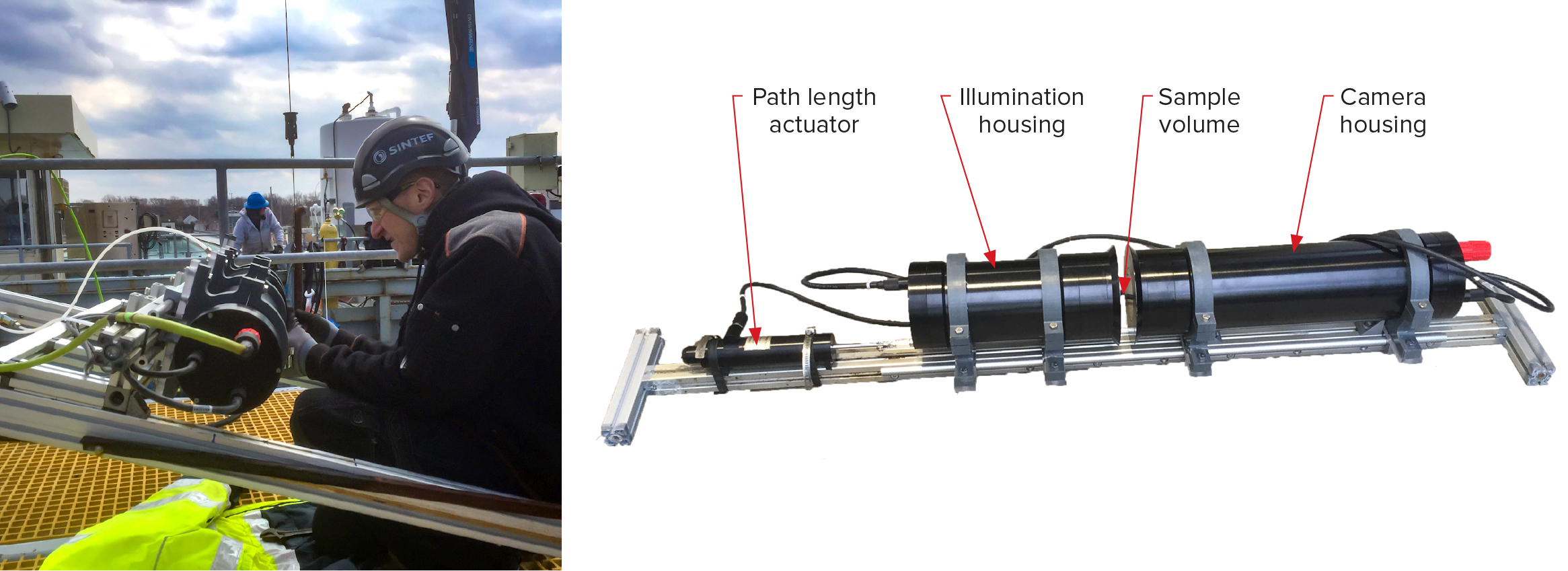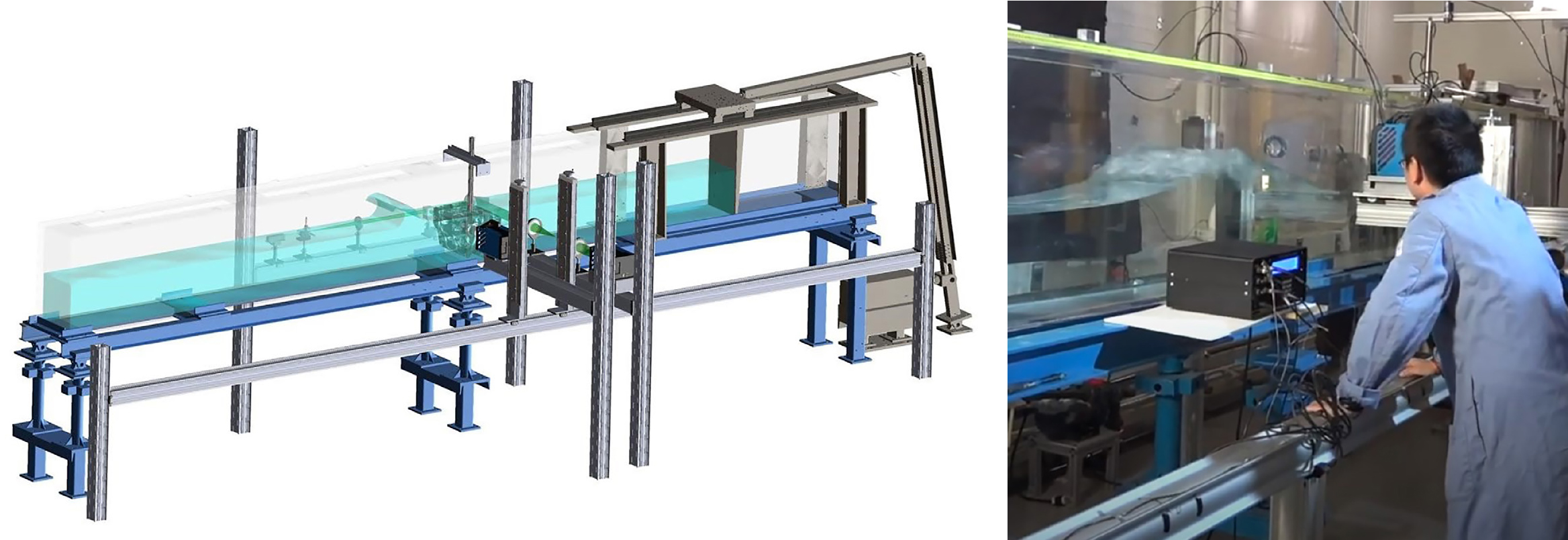Ackleh, A.S., M.I. Hossain, A. Veprauskas, and A. Zhang. 2019. Persistence and stability analysis of discrete-time predator-prey models: A study of population and evolutionary dynamics. Journal of Difference Equations and Applications 25(11):1,568–1,603, https://doi.org/10.1080/10236198.2019.1669579.
Ackleh, A.S., M.I. Hossain, A. Veprauskas, and A. Zhang. 2020. Long-term dynamics of discrete-time predator-prey models: Stability of equilibria, cycles and chaos. Journal of Difference Equations and Applications 26(5):693–726, https://doi.org/10.1080/10236198.2020.1786818.
Afshar-Mohajer, N., C. Li, A.M. Rule, J. Katz, and K. Koehler. 2018. A laboratory study of particulate and gaseous emissions from crude oil and crude oil-dispersant contaminated seawater due to breaking waves. Atmospheric Environment 179:177–186, https://doi.org/10.1016/j.atmosenv.2018.02.017.
Afshar-Mohajer, N., M.A. Fox, and K. Koehler. 2019. The human health risk estimation of inhaled oil spill emissions with and without adding dispersant. Science of The Total Environment 654:924–932, https://doi.org/10.1016/j.scitotenv.2018.11.110.
Ainsworth, C.H., M.J. Schirripa, and H.N. Morzaria-Luna. 2015. An Atlantis Ecosystem Model for the Gulf of Mexico Supporting Integrated Ecosystem Assessment. US Department of Commerce, NOAA Technical Memorandum NMFS-SEFSC-676, NOAA Fisheries, Miami, FL, 149 pp.
Ainsworth, C.H., C.B. Paris, N. Perlin, L.N. Dornberger, W.F. Patterson III, E. Chancellor, S. Murawski, D. Hollander, K. Daly, I.C. Romero, and others. 2018. Impacts of the Deepwater Horizon oil spill evaluated using an end-to-end ecosystem model. PLoS ONE 13(1):e0190840, https://doi.org/10.1371/journal.pone.0190840.
Aman, Z.M., C.B. Paris, E.F. May, M.L. Johns, and D. Lindo-Atichati. 2015. High-pressure visual experimental studies of oil-in-water dispersion droplet size. Chemical Engineering Science 127:392–400, https://doi.org/10.1016/j.ces.2015.01.058.
Androulidakis, Y., V. Kourafalou, T. Özgökmen, O. Garcia-Pineda, B. Lund, M. Le Hénaff, C. Hu, B.K. Haus, G. Novelli, C. Guigand, and others. 2018. Influence of river-induced fronts on hydrocarbon transport: A multiplatform observational study. Journal of Geophysical Research Oceans 123(5):3,259–3,285, https://doi.org/10.1029/2017JC013514.
Androulidakis, Y., V. Kourafalou, L.R. Hole, M. Le Hénaff, and H. Kang. 2020. Pathways of oil spills from potential Cuban offshore exploration: Influence of ocean circulation. Journal of Marine Science and Engineering 8(7):535, https://doi.org/10.3390/jmse8070535.
Athas, J.C., K. Jun, C. McCafferty, O. Owoseni, V.T. John, and S.R. Raghavan. 2014. An effective dispersant for oil spills based on food-grade amphiphiles. Langmuir 30(31):9,285–9,294, https://doi.org/10.1021/la502312n.
Bacosa, H.P., M. Kamalanathan, J. Cullen, D. Shi, C. Xu, K.A. Schwehr, D. Hala, T.L. Wade, A.H. Knap, P.H. Santschi, and A. Quigg. 2020. Marine snow aggregates are enriched in polycyclic aromatic hydrocarbons (PAHs) in oil contaminated waters: Insights from a mesocosm study. Journal of Marine Science and Engineering 8(10):781, https://doi.org/10.3390/jmse8100781.
Barkan, R., M.J. Molemaker, K. Srinivasan, J.C. McWilliams, and E.A. D’Asaro. 2019. The role of horizontal divergence in submesoscale frontogenesis. Journal of Physical Oceanography 49(6):1,593–1,618, https://doi.org/10.1175/JPO-D-18-0162.1.
Barker, C.H., V.H. Kourafalou, C.J. Beegle-Krause, M. Boufadel, M.A. Bourassa, S.G. Buschang, Y. Androulidakis, E.P. Chassignet, K.-F. Dagestad, D.G. Danmeier, and others. 2020. Progress in operational modeling in support of oil spill response. Journal of Marine Science and Engineering 8(9):668, https://doi.org/10.3390/jmse8090668.
Berenshtein, I., C.B. Paris, N. Perlin, M.M. Alloy, S.B. Joye, and S. Murawski. 2020. Invisible oil beyond the Deepwater Horizon satellite footprint. Science Advances 6(7):eaaw8863, https://doi.org/10.1126/sciadv.aaw8863.
Bi, H., Z. Guo, M.C. Benfield, C. Fan, M. Ford, S. Shahrestani, and J.M. Sieracki. 2015. A semi-automated image analysis procedure for in situ plankton imaging systems. PLoS ONE 10(5):e0127121, https://doi.org/10.1371/journal.pone.0127121.
Boglaienko, D., and B. Tansel. 2018. Classification of oil-particle interactions in aqueous environments: Aggregate types depending on state of oil and particle characteristics. Marine Pollution Bulletin 133:693–700, https://doi.org/10.1016/j.marpolbul.2018.06.037.
Booth, C.P., J.W. Leggoe, and Z.M. Aman. 2019. The use of computational fluid dynamics to predict the turbulent dissipation rate and droplet size in a stirred autoclave. Chemical Engineering Science 196:433–443, https://doi.org/10.1016/j.ces.2018.11.017.
Bosman, S.H., P.T. Schwing, R.A. Larson, N.E. Wildermann, G.R. Brooks, I.C. Romero, J.-A. Sanchez-Cabeza, A.C. Ruiz- Fernández, M.L. Machain-Castillo, A. Gracia, and others. 2020. The southern Gulf of Mexico: A baseline radiocarbon isoscape of surface sediments and isotopic excursions at depth. PLoS ONE 15(4):e0231678, https://doi.org/10.1371/journal.pone.0231678.
Bostic, J.T., C. Aeppli, R.F. Swarthout, C.M. Reddy, and L.A. Ziolkowski. 2018. Ongoing biodegradation of Deepwater Horizon oil in beach sands: Insights from tracing petroleum carbon into microbial biomass. Marine Pollution Bulletin 126:130–136, https://doi.org/10.1016/j.marpolbul.2017.10.058.
Boufadel, M.C., F. Gao, L. Zhao, T. Özgökmen, R. Miller, T. King, B. Robinson, K. Lee, and I. Leifer. 2018. Was the Deepwater Horizon well discharge churn flow? Implications on the estimation of the oil discharge and droplet size distribution. Geophysical Research Letters 45(5):2,396–2,403, https://doi.org/10.1002/2017GL076606.
Boufadel, M., A. Bracco, E.P. Chassignet, S.S. Chen, E. D’Asaro, W.K. Dewar, O. Garcia-Pineda, D. Justić, J. Katz, V.H. Kourafalou, and others. 2021. Physical transport processes that affect the distribution of oil in the Gulf of Mexico: Observations and modeling. Oceanography 34(1):58–75, https://doi.org/10.5670/oceanog.2021.117.
Brandvik, P.J., Ø. Johansen, E.J. Davies, F. Leirvik, D.F. Krause, P.S. Daling, D. Dunnebier, S. Masutani, I. Nagamine, C. Storey, and others. 2017. Subsea dispersant injection (SSDI): Summary findings from a multi-year research and development industry initiative. Pp. 2,762–2,790 in International Oil Spill Conference Proceedings. May 15–18, 2017, Long Beach, CA, American Petroleum Institute, https://doi.org/10.7901/2169-3358-2017.1.2762.
Brandvik, P.J., C. Storey, E.J. Davies, and Ø. Johansen. 2019. Combined releases of oil and gas under pressure: The influence of live oil and natural gas on initial oil droplet formation. Marine Pollution Bulletin 140:485–492, https://doi.org/10.1016/j.marpolbul.2019.01.036.
Camilli, R., C.M. Reddy, D.R. Yoerger, B.A.S. Van Mooy, M.V. Jakuba, J.C. Kinsey, C.P. McIntyre, S.P. Sylva, and J.V. Maloney. 2010. Tracking hydrocarbon plume transport and biodegradation at Deepwater Horizon. Science 330(6001):201–204, https://doi.org/10.1126/science.1195223.
Carlson, D.F., T. Özgökmen, G. Novelli, C. Guigand, H. Chang, B. Fox-Kemper, J. Mensa, S. Mehta, E. Fredj, H. Huntley, and others. 2018. Surface ocean dispersion observations from the ship-tethered Aerostat Remote Sensing System. Frontiers in Marine Science 5:479, https://doi.org/10.3389/fmars.2018.00479.
Chandrala, L.D., N. Afshar-Mohajer, K. Nishida, Y. Ronzhes, V.K. Sidhaye, K. Koehler, and J. Katz. 2019. A device for measuring the in-situ response of human bronchial epithelial cells to airborne environmental agents. Scientific Reports 9(7263), https://doi.org/10.1038/s41598-019-43784-5.
Chang, H., H.S. Huntley, A.D. Kirwan Jr., D.F. Carlson, J.A. Mensa, S. Mehta, G. Novelli, T.M. Özgökmen, B. Fox-Kemper, B. Pearson, and others. 2019. Small-scale dispersion in the presence of Langmuir circulation. Journal of Physical Oceanography 49(12):3,069–3,085, https://doi.org/10.1175/JPO-D-19-0107.1.
Chanton, J., T. Zhao, B.E. Rosenheim, S. Joye, S. Bosman, C. Brunner, K.M. Yeager, A.R. Diercks, and D. Hollander. 2015. Using natural abundance radiocarbon to trace the flux of petrocarbon to the seafloor following the Deepwater Horizon oil spill. Environmental Science & Technology 49(2):847–854, https://doi.org/10.1021/es5046524.
Chapman, P., S. Socolofsky, and R. Hetland. 2014. From blowout to beach: An integrated modeling approach. Pp. 919–932 in International Oil Spill Conference Proceedings, May 5–8, 2014, Savannah, GA, American Petroleum Institute, https://doi.org/10.7901/2169-3358-2014.1.919.
Cheng, K., X. Cheng, Y. Wang, H. Bi, and M.C. Benfield. 2019. Enhanced convolutional neural network for plankton identification and enumeration. PLoS ONE 14(7):e0219570, https://doi.org/10.1371/journal.pone.0219570.
Coles, V.J., M.R. Stukel, M.T. Brooks, A. Burd, B.C. Crump, M.A. Moran, J.H. Paul, B.M. Satinsky, P.L. Yager, B.L. Zielinski, and R.R. Hood. 2017. Ocean biogeochemistry modeled with emergent trait-based genomics. Science 358(6367):1,149–1,154, https://doi.org/10.1126/science.aan5712.
Court, C., A.W. Hodges, K. Coffey, C.H. Ainsworth, and D. Yoskowitz. 2020. Effects of the Deepwater Horizon oil spill on human communities: Catch and economic impacts. Pp. 569–580 in Deep Oil Spills. S. Murawski, C.H. Ainsworth, S. Gilbert, D.J. Hollander, C.B. Paris, M. Schlüter, and D.L. Wetzel, eds, Springer, Cham, Switzerland AG, https://doi.org/10.1007/978-3-030-11605-7_33.
Creighton, M.A., Y. Ohata, J. Miyawaki, A. Bose, and R.H. Hurt. 2014. Two-dimensional materials as emulsion stabilizers: Interfacial thermodynamics and molecular barrier properties. Langmuir 30(13):3,687–3,696, https://doi.org/10.1021/la500216n.
Cui, F., X. Geng, B. Robinson, T. King, K. Lee, and M.C. Boufadel. 2020. Oil droplet dispersion under a deep-water plunging breaker: Experimental measurement and numerical modeling. Journal of Marine Science and Engineering 8(4):230, https://doi.org/10.3390/jmse8040230.
Dagestad, K.-F., J. Röhrs, Ø. Breivik, and B. Ådlandsvik. 2018. OpenDrift v1.0: A generic framework for trajectory modelling. Geoscientific Model Development 11:1,405–1,420, https://doi.org/10.5194/gmd-11-1405-2018.
D’Asaro, E.A., A.Y. Shcherbina, J.M. Klymak, J. Molemaker, G. Novelli, C.M. Guigand, A.C. Haza, B.K. Haus, E.H. Ryan, G.A. Jacobs, and others. 2018. Ocean convergence and the dispersion of flotsam. Proceedings of the National Academy of Sciences of the United States of America 115(6):1,162–1,167, https://doi.org/10.1073/pnas.1718453115.
Daly, K.L., A.C. Vaz, and C.B. Paris. 2020. Physical processes influencing the sedimentation and lateral transport of MOSSFA in the NE Gulf of Mexico. Pp. 300–314 in Scenarios and Responses to Future Deep Oil Spills. S. Murawski, C.H. Ainsworth, S. Gilbert, D.J. Hollander, C.B. Paris, M. Schlüter, and D.L. Wetzel, eds, Springer, Cham, Switzerland AG, https://doi.org/10.1007/978-3-030-12963-7_18.
Davies, E.J., P.J. Brandvik, F. Leirvik, and R. Nepstad. 2017. The use of wide-band transmittance imaging to size and classify suspended particulate matter in seawater. Marine Pollution Bulletin 115:105–114, https://doi.org/10.1016/j.marpolbul.2016.11.063.
Diercks, A.R., R.C. Highsmith, V.L. Asper, D. Joung, Z. Zhou, L. Guo, A.M. Shiller, S.B. Joye, A.P. Teske, N. Guinasso, and others. 2010. Characterization of subsurface polycyclic aromatic hydrocarbons at the Deepwater Horizon site. Geophysical Research Letters 37(20), https://doi.org/10.1029/2010GL045046.
Dissanayake, A.L., J. Gros, and S.A. Socolofsky. 2018a. Integral models for bubble, droplet, and multiphase plume dynamics in stratification and crossflow. Environmental Fluid Mechanics 18:1,167–1,202, https://doi.org/10.1007/s10652-018-9591-y.
Dissanayake, A.L., A.B. Burd, K.L. Daly, S. Francis, and U. Passow. 2018b. Numerical modeling of the interactions of oil, marine snow, and riverine sediments in the ocean. Journal of Geophysical Research Oceans 123(8):5,388–5,405, https://doi.org/10.1029/2018JC013790.
Doyle, S.M., E.A. Whitaker, V. De Pascuale, T.L. Wade, A.H. Knap, P.H. Santschi, A. Quigg, and J.B. Sylvan. 2018. Rapid formation of microbe-oil aggregates and changes in community composition in coastal surface water following exposure to oil and the dispersant Corexit. Frontiers in Microbiology 9:689, https://doi.org/10.3389/fmicb.2018.00689.
Dukhovskoy, D.S., S.L. Morey, E.P. Chassignet, X. Chen, V.J. Coles, L. Cui, K.C. Harris, R. Hetland, T.-J. Hsu, A.J. Manning, and others. 2021. Development of the CSOMIO Coupled Ocean-Sediment-Biology-Model. Frontiers in Marine Science, https://doi.org/10.3389/fmars.2021.629299.
Farinmade, A., O.F. Ojo, J. Trout, J. He, V. John, D.A. Blake, Y.M. Lvov, D. Zhang, D. Nguyen, and A. Bose. 2020. Targeted and stimulus-responsive delivery of surfactant to the oil-water interface for applications in oil spill remediation. ACS Applied Materials & Interfaces 12(1):1,840–1,849, https://doi.org/10.1021/acsami.9b17254.
Farrington, J.W., E.B. Overton, and U. Passow. 2021. Biogeochemical processes affecting the fate of discharged Deepwater Horizon gas and oil: New insights and remaining gaps in our understanding. Oceanography 34(1):76–97, https://doi.org/10.5670/oceanog.2021.118.
Fisher, C.R., P.-Y. Hsing, C.L. Kaiser, D.R. Yoerger, H.H. Roberts, W.W. Shedd, E.E. Cordes, T.M. Shank, S.P. Berlet, M.G. Saunders, and others. 2014. Footprint of Deepwater Horizon blowout impact to deep-water coral communities. Proceedings of the National Academy of Sciences of the United States of America 111(32):11,744–11,749, https://doi.org/10.1073/pnas.1403492111.
Folkerts, E.J., R.M. Heuer, S. Flynn, J.D. Stieglitz, D.D. Benetti, D.S. Alessi, G.G. Goss, and M. Grosell. 2020. Exposure to hydraulic fracturing flowback water impairs mahi-mahi (Coryphaena hippurus) cardiomyocyte contractile function and swimming performance. Environmental Science & Technology 54(21):13,579–13,589, https://doi.org/10.1021/acs.est.0c02719.
Frasier, K.E., M.A. Roch, M.S. Soldevilla, S.M. Wiggins, L.P. Garrison, and J.A. Hildebrand. 2017. Automated classification of dolphin echolocation click types from the Gulf of Mexico. PLoS Computational Biology 13(12):e1005823, https://doi.org/10.1371/journal.pcbi.1005823.
Garcia-Pineda, O., Y. Androulidakis, M. Le Hénaff, V. Kourafalou, L.R. Hole, H. Kang, G. Staples, E. Ramirez, and L. DiPinto. 2020. Measuring oil residence time with GPS-drifters, satellites, and Unmanned Aerial Systems (UAS). Marine Pollution Bulletin 150:110644, https://doi.org/10.1016/j.marpolbul.2019.110644.
Girard, F., and C.R. Fisher. 2018. Long-term impact of the Deepwater Horizon oil spill on deep-sea corals detected after seven years of monitoring. Biological Conservation 225:117–127, https://doi.org/10.1016/j.biocon.2018.06.028.
Gonçalves, R.C., M. Iskandarani, T. Özgökmen, and W.C. Thacker. 2019. Reconstruction of submesoscale velocity field from surface drifters. Journal of Physical Oceanography 49(4):941–958, https://doi.org/10.1175/JPO-D-18-0025.1.
Gordon, C., K. Fennel, C. Richards, L.K. Shay, and J.K. Brewster. 2020. Can ocean community production and respiration be determined by measuring high-frequency oxygen profiles from autonomous floats? Biogeosciences 17(15):4,119–4,134, https://doi.org/10.5194/bg-17-4119-2020.
Gros, J., S.A. Socolofsky, A.L. Dissanayake, I. Jun, L. Zhao, M.C. Boufadel, C.M. Reddy, and J.S. Arey. 2017. Petroleum dynamics in the sea and influence of subsea dispersant injection during Deepwater Horizon. Proceedings of the National Academy of Sciences of the United States of America 114(38):10,065–10,070, https://doi.org/10.1073/pnas.1612518114.
Gros, J., J.S. Arey, S.A. Socolofsky, and A.L. Dissanayake. 2020. Dynamics of live oil droplets and natural gas bubbles in deep water. Environmental Science & Technology 54(19):11,865–11,875, https://doi.org/10.1021/acs.est.9b06242.
Halanych, K.M., C.H. Ainsworth, E.E. Cordes, R.E. Dodge, M. Huettel, I.A. Mendelssohn, S.A. Murawski, C.B. Paris-Limouzy, P.T. Schwing, R.F. Shaw, and T. Sutton. 2021. Effects of petroleum by-products and dispersants on ecosystems. Oceanography 34(1):152–163, https://doi.org/10.5670/oceanog.2021.123.
Heuer, R.M., G.L.J. Galli, H.A. Shiels, L.A. Fieber, G.K. Cox, E.M. Mager, J.D. Stieglitz, D.D. Benetti, M. Grosell, and D.A. Crossley II. 2019. Impacts of Deepwater Horizon crude oil on mahi-mahi (Coryphaena hippurus) heart cell function. Environmental Science & Technology 53(16):9,895–9,904, https://doi.org/10.1021/acs.est.9b03798.
Hole, L.R., K.-F. Dagestad, J. Röhrs, C. Wettre, V.H. Kourafalou, Y. Androulidakis, H. Kang, M. Le Hénaff, and O. Garcia-Pineda. 2019. The Deepwater Horizon oil slick: Simulations of river front effects and oil droplet size distribution. Journal of Marine Science and Engineering 7(10):329, https://doi.org/10.3390/jmse7100329.
Jones, L., and M.H. Garcia. 2018. Development of a rapid response riverine oil-particle aggregate formation, transport, and fate model. Journal of Environmental Engineering 144(12):04018125, https://doi.org/10.1061/(ASCE)EE.1943-7870.0001470.
Knap, A.H., T.D. Sleeter, R.E. Dodge, S.C. Wyers, H.R. Frith, and S.R. Smith. 1983. The effects of oil spills and dispersant use on corals: A review and multi-disciplinary experimental approach. Oil and Petroleum Pollution 1(3):157–169, https://doi.org/10.1016/S0143-7127(83)90134-5.
Kujawinski, E.B., M.C. Kido Soule, D.L. Valentine, A.K. Boysen, K. Longnecker, and M.C. Redmond. 2011. Fate of dispersants associated with the Deepwater Horizon oil spill. Environmental Science & Technology 45(4):1,298–1,306, https://doi.org/10.1021/es103838p.
Laxague, N.J.M., T.M. Özgökmen, B.K. Haus, G. Novelli, A. Shcherbina, P. Sutherland, C.M. Guigand, B. Lund, S. Mehta, M. Alday, and J. Molemaker. 2018. Observations of near-surface current shear help describe oceanic oil and plastic transport. Geophysical Research Letters 45(1):245–249, https://doi.org/10.1002/2017GL075891.
Leonte, M., B. Wang, S.A. Socolofsky, S. Mau, J.A. Breier, and J.D. Kessler. 2018. Using carbon isotope fractionation to constrain the extent of methane dissolution into the water column surrounding a natural hydrocarbon gas seep in the northern Gulf of Mexico. Geochemistry, Geophysics, Geosystems 19(11):4,459–4,475, https://doi.org/10.1029/2018GC007705.
Li, C., J. Miller, J. Wang, S.S. Koley, and J. Katz. 2017. Size distribution and dispersion of droplets generated by impingement of breaking waves on oil slicks. Journal of Geophysical Research Oceans 122(10):7,938–7,957, https://doi.org/10.1002/2017JC013193.
Li, K., N.A. Sidorovskaia, and C.O. Tiemann. 2020. Model-based unsupervised clustering for distinguishing Cuvier’s and Gervais’ beaked whales in acoustic data. Ecological Informatics 58:101094, https://doi.org/10.1016/j.ecoinf.2020.101094.
Li, M., Z. Zhao, Y. Pandya, G.V. Iungo, and D. Yang. 2019. Large-eddy simulations of oil droplet aerosol transport in the marine atmospheric boundary layer. Atmosphere 10(8):459, https://doi.org/10.3390/atmos10080459.
Lindo-Atichati, D., C.B. Paris, M. Le Hénaff, M. Schedler, A.G. Valladares-Juárez, and R. Müller. 2016. Simulating the effects of droplet size, high-pressure biodegradation, and variable flow rate on the subsea evolution of deep plumes from the Macondo blowout. Deep Sea Research Part II 129:301–310, https://doi.org/10.1016/j.dsr2.2014.01.011.
Lund, B., B.K. Haus, J. Horstmann, H.C. Graber, R. Carrasco, N.J.M. Laxague, G. Novelli, C.M. Guigand, and T.M. Özgökmen. 2018. Near-surface current mapping by shipboard marine X-band radar: A validation. Journal of Atmospheric and Oceanic Technology 35(5):1,077–1,090, https://doi.org/10.1175/JTECH-D-17-0154.1.
Main, K.L., D.L. Wetzel, R. Grams, M.J. Nystrom, K. Niebuhr, and J. Lewis. 2018. Utilizing recirculating aquaculture systems to evaluate the impact of oil toxicity on marine fishes: Design and operation of a large-scale experimental system. Marine Technology Society Journal 52(6):23–31, https://doi.org/10.4031/MTSJ.52.6.2.
Murawski, S.A., M. Grosell, C. Smith, T. Sutton, K.M. Halanych, R.F. Shaw, and C.A. Wilson. 2021. Impacts of petroleum, petroleum components, and dispersants on organisms and populations. Oceanography 34(1):136–151, https://doi.org/10.5670/oceanog.2021.122.
Nelson, D., J.D. Stieglitz, G.K. Cox, R.M. Heuer, D.D. Benetti, M. Grosell, and D.A. Crossley II. 2017. Cardio-respiratory function during exercise in the cobia, Rachycentron canadum: The impact of crude oil exposure. Comparative Biochemistry and Physiology Part C: Toxicology & Pharmacology 201:58–65, https://doi.org/10.1016/j.cbpc.2017.08.006.
North, E.W., E.E. Adams, A.E. Thessen, Z. Schlag, R. He, S.A. Socolofsky, S.M. Masutani, and S.D. Peckham. 2015. The influence of droplet size and biodegradation on the transport of subsurface oil droplets during the Deepwater Horizon spill: A model sensitivity study. Environmental Research Letters 10(2):024016, https://doi.org/10.1088/1748-9326/10/2/024016.
Novelli, G., C.M. Guigand, C. Cousin, E.H. Ryan, N.J.M. Laxague, H. Dai, B.K. Haus, and T.M. Özgökmen. 2017. A biodegradable surface drifter for ocean sampling on a massive scale. Journal of Atmospheric and Oceanic Technology 34(11):2,509–2,532, https://doi.org/10.1175/JTECH-D-17-0055.1.
Novelli, G., C.M. Guigand, M.C. Boufadel, and T.M. Özgökmen. 2020. On the transport and landfall of marine oil spills, laboratory and field observations. Marine Pollution Bulletin 150:110805, https://doi.org/10.1016/j.marpolbul.2019.110805.
NSF NSB (National Science Foundation, National Science Board). 2020. Invention, Knowledge Transfer, and Innovation. Science and Engineering Indicators 2020. NSB-2020-4, Alexandria, VA, https://ncses.nsf.gov/pubs/nsb20204/.
Nyankson, E., O. Owoseni, V.T. John, and R.B. Gupta. 2015. Surfactant-loaded halloysite clay nanotube dispersants for crude oil spill remediation. Industrial & Engineering Chemistry Research 54(38):9,328–9,341, https://doi.org/10.1021/acs.iecr.5b02032.
Ojo, O.F., A. Farinmade, J. Trout, M. Omarova, J. He, V. John, D.A. Blake, Y.M. Lvov, D. Zhang, D. Nguyen, and A. Bose. 2019. Stoppers and skins on clay nanotubes help stabilize oil-in-water emulsions and modulate the release of encapsulated surfactants. ACS Applied Nano Materials 2(6):3,490–3,500, https://doi.org/10.1021/acsanm.9b00469.
Owoseni, O., Y. Zhang, M. Omarova, X. Li, J. Lal, G.L. McPherson, S.R. Raghavan, A. Bose, and V.T. John. 2018. Microstructural characteristics of surfactant assembly into a gel-like mesophase for application as an oil spill dispersant. Journal of Colloid and Interface Science 524:279–288, https://doi.org/10.1016/j.jcis.2018.03.089.
Passow, U., J. Sweet, S. Francis, C. Xu, A.L. Dissanayake, Y.-Y. Lin, P.H. Santschi, and A. Quigg. 2019. Incorporation of oil into diatom aggregates. Marine Ecology Progress Series 612:65–86, https://doi.org/10.3354/meps12881.
Perlin, N., C.B. Paris, I. Berenshtein, A.C. Vaz, R. Faillettaz, Z.M. Aman, P.T. Schwing, I.C. Romero, M. Schlüter, A. Liese, and others. 2020. Far-field modeling of a deep-sea blowout: Sensitivity studies of initial conditions, biodegradation, sedimentation, and subsurface dispersant injection on surface slicks and oil plume concentrations. Pp. 170–192 in Deep Oil Spills. S. Murawski, C.H. Ainsworth, S. Gilbert, D.J. Hollander, C.B. Paris, M. Schlüter, and D.L. Wetzel, eds, Springer, Cham, Switzerland AG, https://doi.org/10.1007/978-3-030-11605-7_11.
Quigg, A., J.W. Farrington, S. Gilbert, S.A. Murawski, and V.T. John. 2021. A decade of GoMRI dispersant science: Lessons learned and recommendations for the future. Oceanography 34(1):98–111, https://doi.org/10.5670/oceanog.2021.119.
Razaz, M., D. Di Iorio, B. Wang, S. Daneshgar Asl, and A.M. Thurnherr. 2020. Variability of a natural hydrocarbon seep and its connection to the ocean surface. Scientific Reports 10:12654, https://doi.org/10.1038/s41598-020-68807-4.
Reddy, C.M., J.S. Arey, J.S. Seewald, S.P. Sylva, K.L. Lemkau, R.K. Nelson, C.A. Carmichael, C.P. McIntyre, J. Fenwick, G.T. Ventura, and others. 2012. Composition and fate of gas and oil released to the water column during the Deepwater Horizon oil spill. Proceedings of the National Academy of Sciences of the United States of America 109(50):20,229–20,234, https://doi.org/10.1073/pnas.1101242108.
Riehm, D.A., J.E. Neilsen, G.D. Bothun, V.T. John, S.R. Raghavan, and A.V. McCormick. 2015. Efficient dispersion of crude oil by blends of food-grade surfactants: Toward greener oil-spill treatments. Marine Pollution Bulletin 101(1):92–97, https://doi.org/10.1016/j.marpolbul.2015.11.012.
Rodgers, M.L., T.A. Sherwood, A.M. Tarnecki, R.J. Griffitt, and D.L. Wetzel. 2021. Characterizing transcriptomic responses of southern flounder (Paralichthys lethostigma) chronically exposed to Deepwater Horizon oiled sediments. Aquatic Toxicology 230:105716, https://doi.org/10.1016/j.aquatox.2020.105716.
Rullkötter, J., and J.W. Farrington. 2021. What was released? Assessing the physical properties and chemical composition of petroleum and products of burned oil. Oceanography 34(1):44–57, https://doi.org/10.5670/oceanog.2021.116.
Saha, A., A. Nikova, P. Venkataraman, V.T. John, and A. Bose. 2013. Oil emulsification using surface-tunable carbon black particles. ACS Applied Materials & Interfaces 5(8):3,094–3,100, https://doi.org/10.1021/am3032844.
Sandifer, P.A., A. Ferguson, M.L. Finucane, M. Partyka, H.M. Solo-Gabriele, A.H. Walker, K. Wowk, R. Caffey, and D. Yoskowitz. 2021. Human health and socioeconomic effects of the Deepwater Horizon oil spill in the Gulf of Mexico. Oceanography 34(1):174–191, https://doi.org/10.5670/oceanog.2021.125.
Shahrestani, S., H. Bi, V. Lyubchich, and K.M. Boswell. 2017. Detecting a nearshore fish parade using the adaptive resolution imaging sonar (ARIS): An automated procedure for data analysis. Fisheries Research 191:190–199, https://doi.org/10.1016/j.fishres.2017.03.013.
Shay, L.K., J.K. Brewster, B. Jaimes, C. Gordon, K. Fennel, P. Furze, H. Fargher, and R. He. 2019. Physical and biochemical structure measured by APEX-EM floats. Pp.1–6 in 2019 IEEE/OES Twelfth Current, Waves and Turbulence Measurement (CWTM). March 10–13, 2019, Institute of Electrical and Electronic Engineers, San Diego, CA, https://doi.org/10.1109/CWTM43797.2019.8955168.
Sherwood, T.A., R.L. Medvecky, C.A. Miller, A.M. Tarnecki, R.W. Schloesser, K.L. Main, C.L. Mitchelmore, and D.L. Wetzel. 2019. Nonlethal biomarkers of oxidative stress in oiled sediment exposed southern flounder (Paralichthys lethostigma): Utility for field-base monitoring exposure and potential recovery. Environmental Science & Technology 53(24):14,734–14,743, https://doi.org/10.1021/acs.est.9b05930.
Shi, D., G. Bera, A.H. Knap, A. Quigg, I. Al Atwah, G. Gold-Bouchot, and T.L. Wade. 2020. A mesocosm experiment to determine half-lives of individual hydrocarbons in simulated oil spill scenarios with and without the dispersant, Corexit. Marine Pollution Bulletin 151:110804, https://doi.org/10.1016/j.marpolbul.2019.110804.
Socolofsky, S.A., E.E. Adams, and C.R. Sherwood. 2011. Formation dynamics of subsurface hydrocarbon intrusions following the Deepwater Horizon blowout. Geophysical Research Letters 38(9), https://doi.org/10.1029/2011GL047174.
Socolofsky, S.A., J. Gros, E. North, M.C. Boufadel, T.F. Parkerton, and E.E. Adams. 2019. The treatment of biodegradation in models of sub-surface oil spills: A review and sensitivity study. Marine Pollution Bulletin 143:204–219, https://doi.org/10.1016/j.marpolbul.2019.04.018.
Solsona-Berga, A., K.E. Frasier, S. Baumann-Pickering, S.M. Wiggins, and J.A. Hildebrand. 2020. DetEdit: A graphical user interface for annotating and editing events detected in long-term acoustic monitoring data. PLoS Computational Biology 16(1):e1007598, https://doi.org/10.1371/journal.pcbi.1007598.
Tarnecki, J.H., A.A. Wallace, J.D. Simons, and C.H. Ainsworth. 2016. Progression of a Gulf of Mexico food web supporting Atlantis ecosystem model development. Fisheries Research 179:237–250, https://doi.org/10.1016/j.fishres.2016.02.023.
US Department of Labor, Bureau of Labor Statistics, Employment Projections Program. 2020. Fastest growing occupations, https://www.bls.gov/emp/tables/fastest-growing-occupations.htm.
Valentine, D.L., G.B. Fisher, S.C. Bagby, R.K. Nelson, C.M. Reddy, S.P. Sylva, and M.A. Woo. 2014. Fallout plume of submerged oil from Deepwater Horizon. Proceedings of the National Academy of Sciences of the United States of America 111(45):15,906–15,911, https://doi.org/10.1073/pnas.1414873111.
Wade, T.L., M. Morales-McDevitt, G. Bera, D. Shi, S. Sweet, B. Wang, G. Gold-Bouchot, A. Quigg, and A.H. Knap. 2017. A method for the production of large volumes of WAF and CEWAF for dosing mesocosms to understand marine oil snow formation. Heliyon 3(10):e00419, https://doi.org/10.1016/j.heliyon.2017.e00419.
Wang, B., and S.A. Socolofsky. 2015. A deep-sea, high-speed, stereoscopic imaging system for in situ measurement of natural seep bubble and droplet characteristics. Deep Sea Research Part I 104:134–148, https://doi.org/10.1016/j.dsr.2015.08.001.
Wang, B., I. Jun, S.A. Socolofsky, S.F. DiMarco, and J.D. Kessler. 2020. Dynamics of gas bubbles from a submarine hydrocarbon seep within the hydrate stability zone. Geophysical Research Letters 47(18):e2020GL089256, https://doi.org/10.1029/2020GL089256.
Warner, J.C., B. Armstrong, R. He, and J.B. Zambon. 2010. Development of a Coupled Ocean-Atmosphere-Wave-Sediment Transport (COAWST) Modeling System. Ocean Modelling 35(3):230–244, https://doi.org/10.1016/j.ocemod.2010.07.010.
White, H.K., P.-Y. Hsing, W. Cho, T.M. Shank, E.E. Cordes, A.M. Quattrini, R.K. Nelson, R. Camilli, A.W.J. Demopoulos, C.R. German, and others. 2012. Impact of the Deepwater Horizon oil spill on a deep-water coral community in the Gulf of Mexico. Proceedings of the National Academy of Sciences of the United States of America 109(50):20,303–20,308, https://doi.org/10.1073/pnas.1118029109.
Ye, L., A.J. Manning, T.-J. Hsu, S. Morey, E.P. Chassignet, and T.A. Ippolito. 2018. Novel application of laboratory instrumentation characterizes mass settling dynamics of oil-mineral aggregates (OMAs) and oil-mineral-microbial interactions. Marine Technology Society Journal 52(6):87–90, https://doi.org/10.4031/MTSJ.52.6.14.
Ye, L., A.J. Manning, and T.-J. Hsu. 2020. Oil-mineral flocculation and settling velocity in saline water. Water Research 173:115569, https://doi.org/10.1016/j.watres.2020.115569.
Yu, T., L.T. Swientoniewski, M. Omarova, M.-C. Li, I.I. Negulescu, N. Jiang, O.A. Darvish, A. Panchal, D.A. Blake, Q. Wu, and others. 2019. Investigation of amphiphilic polypeptoid-functionalized halloysite nanotubes as emulsion stabilizer for oil spill remediation. ACS Applied Materials & Interfaces 11(31):27,944–27,953, https://doi.org/10.1021/acsami.9b08623.
Zhao, L., J. Torlapati, M.C. Boufadel, T. King, B. Robinson, and K. Lee. 2014a. VDROP: A comprehensive model for droplet formation of oil and gasses in liquids—Incorporation of the interfacial tension and droplet viscosity. Chemical Engineering Journal 253:93–106, https://doi.org/10.1016/j.cej.2014.04.082.
Zhao, L., M.C. Boufadel, S.A. Socolofsky, E. Adams, T. King, and K. Lee. 2014b. Evolution of droplets in subsea oil and gas blowouts: Development and validation of the numerical model VDROP-J. Marine Pollution Bulletin 83(1):58–69, https://doi.org/10.1016/j.marpolbul.2014.04.020.
Zhao, L., M.C. Boufadel, E. Adams, S.A. Socolofsky, T. King, K. Lee, and T. Nedwed. 2015. Simulation of scenarios of oil droplet formation from the Deepwater Horizon blowout. Marine Pollution Bulletin 101(1):304–319, https://doi.org/10.1016/j.marpolbul.2015.10.068.
Zhao, L., M.C. Boufadel, X. Geng, K. Lee, T. King, B. Robinson, and F. Fitzpatrick. 2016. A-DROP: A predictive model for the formation of oil particle aggregates (OPAs). Marine Pollution Bulletin 106(1–2):245–259, https://doi.org/10.1016/j.marpolbul.2016.02.057.
Zhao, L., M.C. Boufadel, T. King, B. Robinson, F. Gao, S.A. Socolofsky, and K. Lee. 2017. Droplet and bubble formation of combined oil and gas releases in subsea blowouts. Marine Pollution Bulletin 120(1–2):203-216, https://doi.org/10.1016/j.marpolbul.2017.05.010.
Ziegwied, A.T., V. Dobbin, S. Dyer, C. Pierpoint, and N. Sidorovskaia. 2016. Using autonomous surface vehicles for passive acoustic monitoring (PAM). Pp. 1–5 in OCEANS 2016 MTS/IEEE Monterey, September 19–23, 2016, Monterey, CA, Institute of Electrical and Electronic Engineers, https://doi.org/10.1109/OCEANS.2016.7761380.


